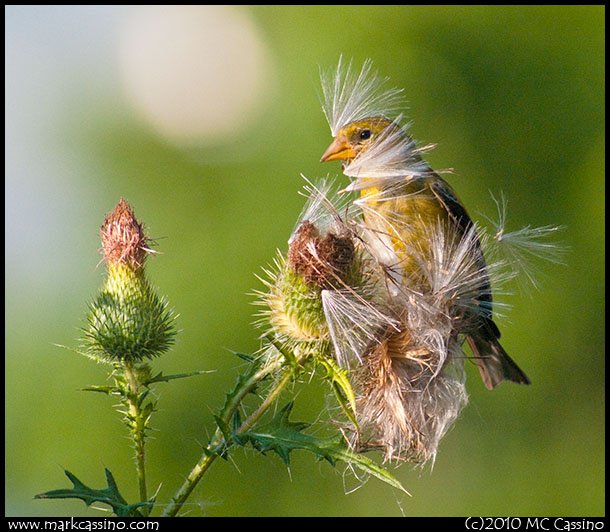Posted by mcc on Jan 26 2011 in Infrared, Digital Infrared
Here’s a re-work of a digital infrared image from last fall - I decided to ditch the channel swapping and go for a more subtle color tonality. You can see the original version here.
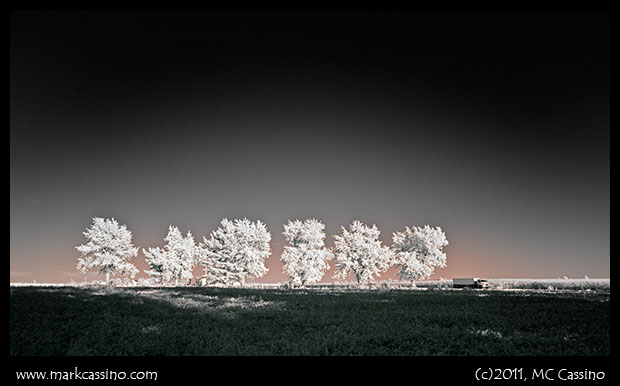
Here’s a re-work of a digital infrared image from last fall - I decided to ditch the channel swapping and go for a more subtle color tonality. You can see the original version here.

Here it is, bleak mid winter. The skies are gloomy and grey and days pass without a hint of sunshine. A little snow covers the ground. It is cold.
It snows, now and then, and I’ve been going outside to take snow crystal photographs. But the snow is opaque, dusty, and effervescent. Hours spent collecting snow crystals result in only mediocre images, as all the crystals are broken, odd or irregular.
The other night, after a few hours of collecting and discarding snowflakes, I realized just how selective this whole process is. The snow crystals I decide to display are the most regular and symmetric of the snow crystals I choose to photograph, which are the most regular and symmetric of the ones I gather. It seems that the vast majority of the crystals actually flying around in the air or landing on earth are irregular or broken, odd and ugly. I ignore them and focus attention on a small percentage that flatter my construct of how snow crystals really should be. Nature speaks with a loud and clear voice, but I hear only one word out of a thousand, and misunderstand even those.
Hmmm… Too much time spent out in the cold. Here are a few shots from the last couple of weeks:
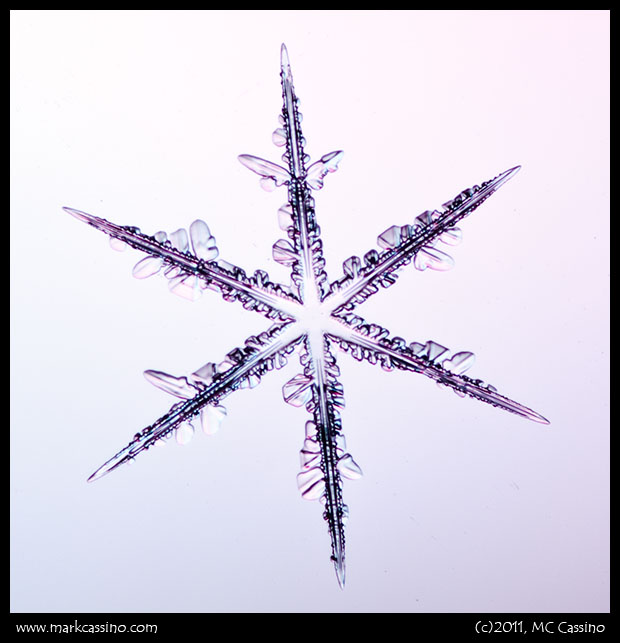
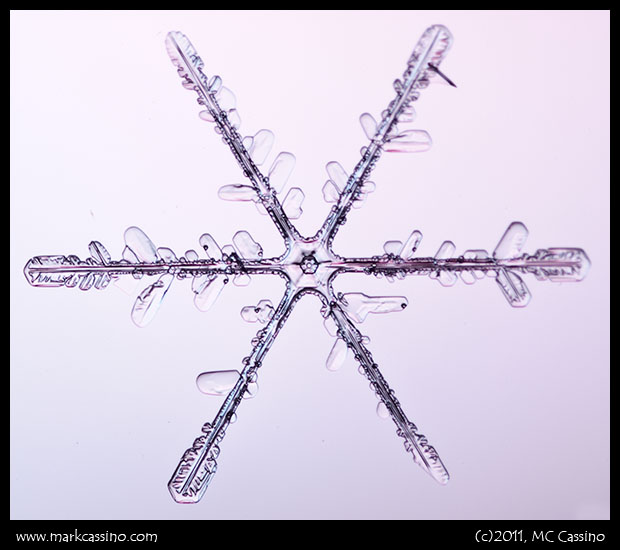
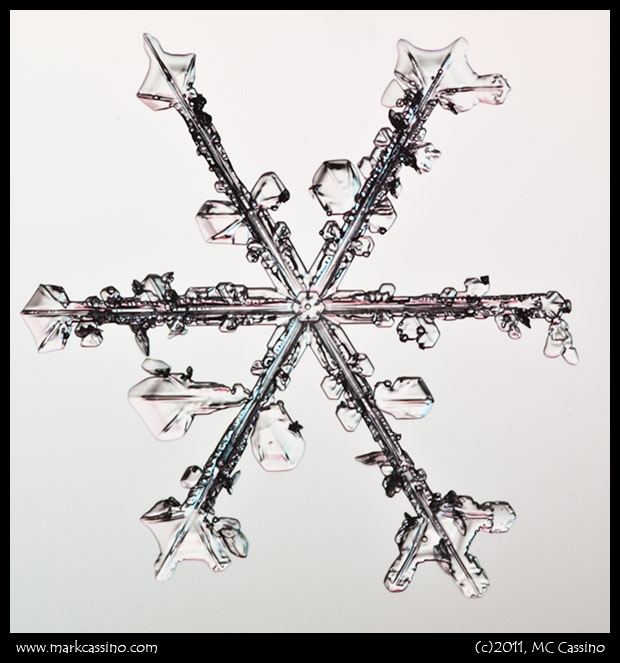

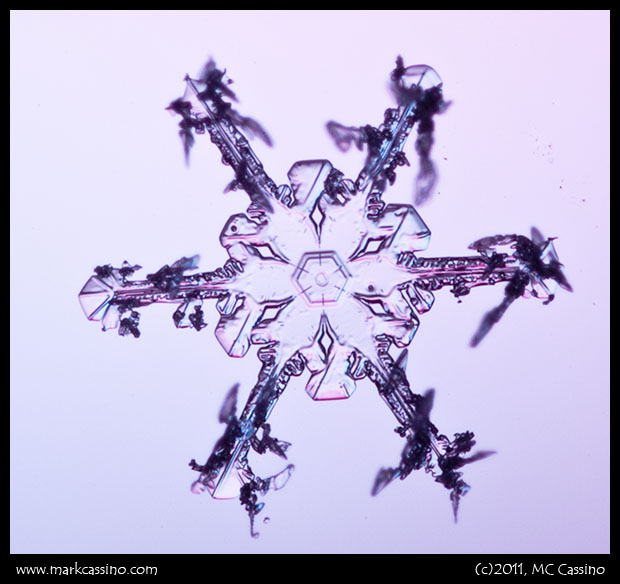
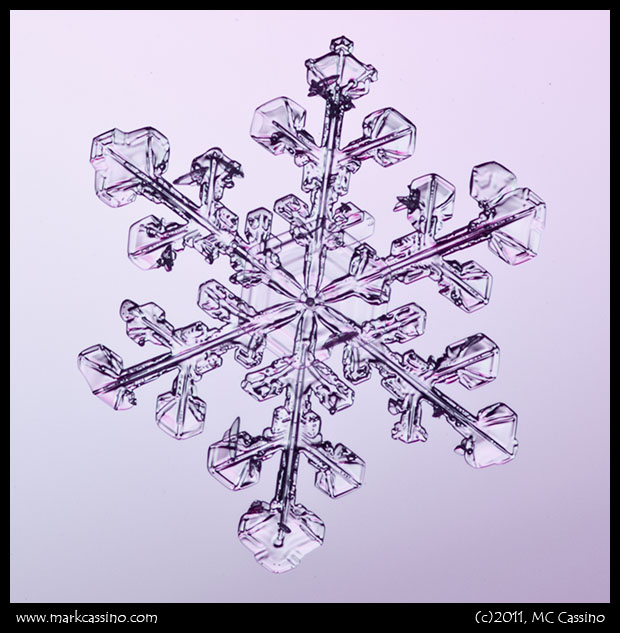
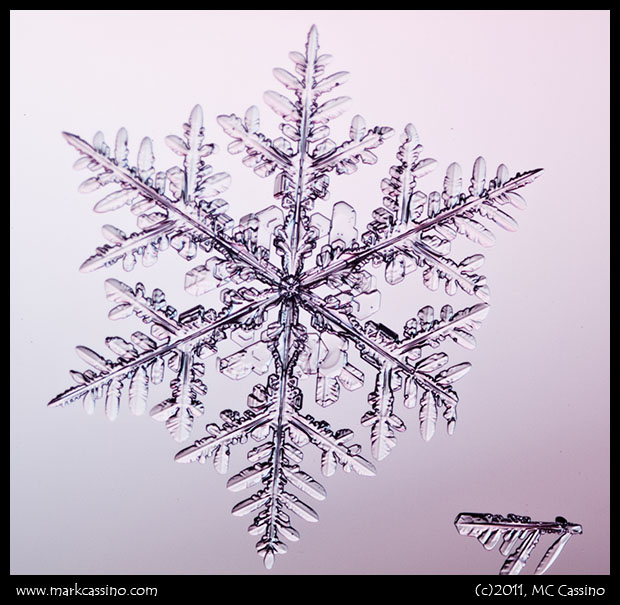
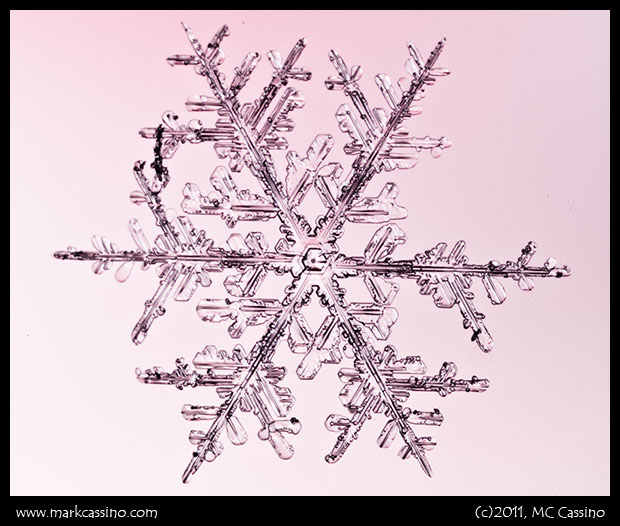
This December has proven to be pretty cold - I noticed folks ice fishing in the last few day s- but aside from a little snow at the start of the month, it’s been pretty dry. Here are a few more snow crystals from the second good snow of December . As this month winds into the holidays and then to an end, no snow is in the forecast. Hoping for a productive 2011!
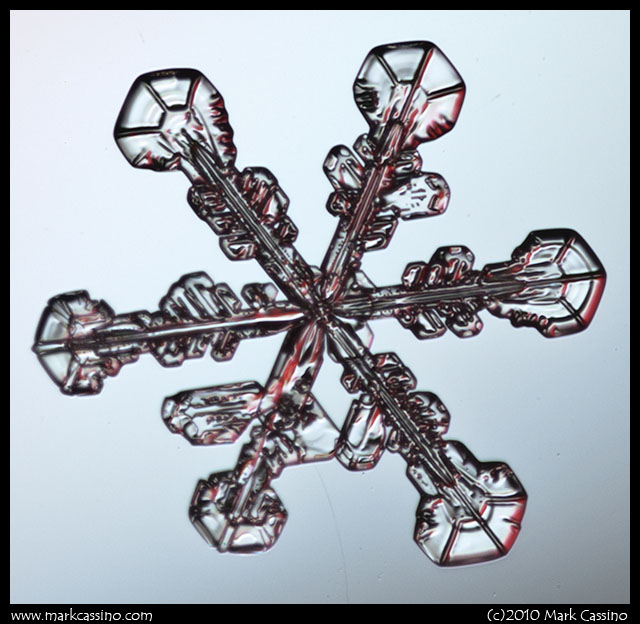
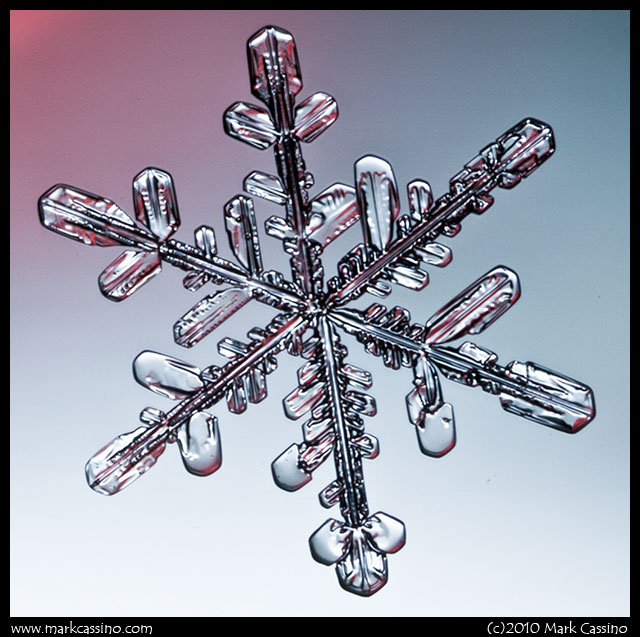

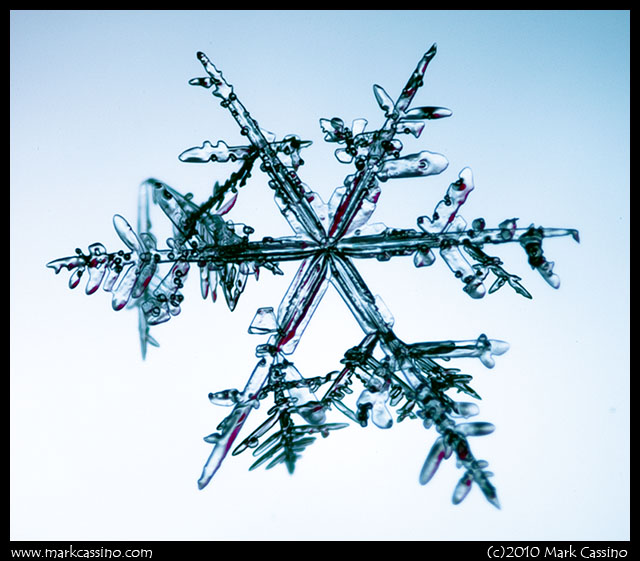
Hard to believe that just last week it was a balmy 53 degrees and warm gentle breezes were pushing the last fall leaves around on the sidewalks. The temperatures have dropped, the lake effect snow has begun, and here we are on December 6, with the first snow crystal shots of 2010/11. They aren’t particularly interesting, but they hold the promise for more to come.

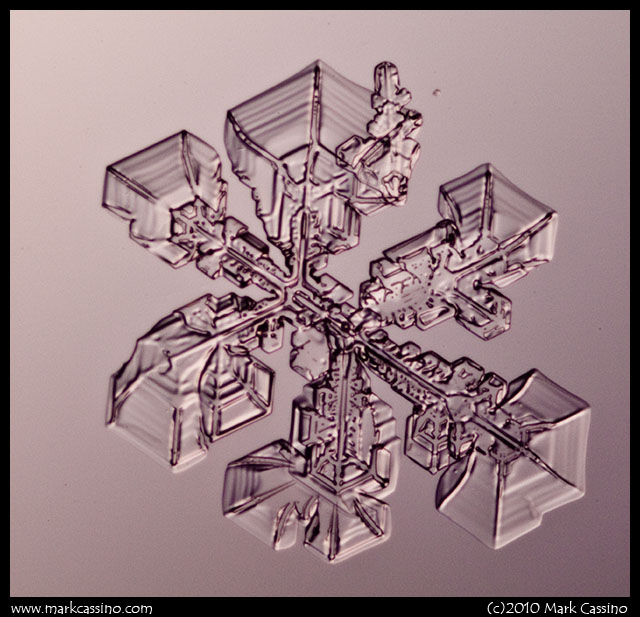
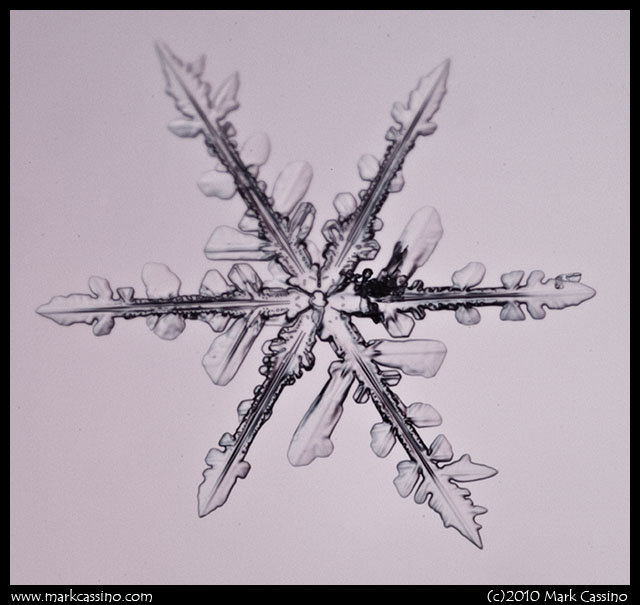
Here it is, late November, and the first snows of the year are wisping in the air. Last year at this time, in a very late and warm spring, I was still finding the very last Autumn Meadowhawks. This year we’ve had a few days of below freezing temperatures, and the dragonflies are surely finished (at least till next spring.)
Here are a couple shots, leftovers from summer past.
First – the only mature male Blue Dasher that I was able to get a shot of – as you can see, he is a bit past his prime and worse for wear and tear. Well, we all have those days.
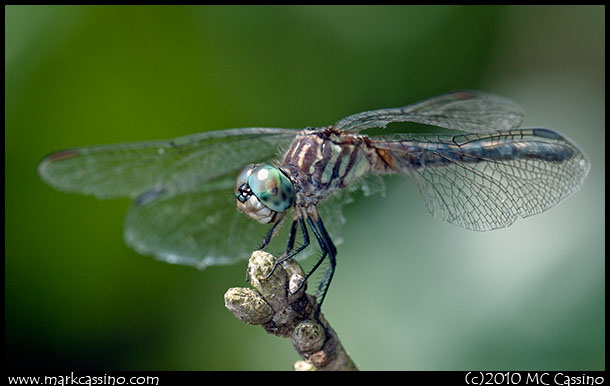
Second, a couple shots of a male Eastern Pondhawk, a species I don’t see as often as I use to.
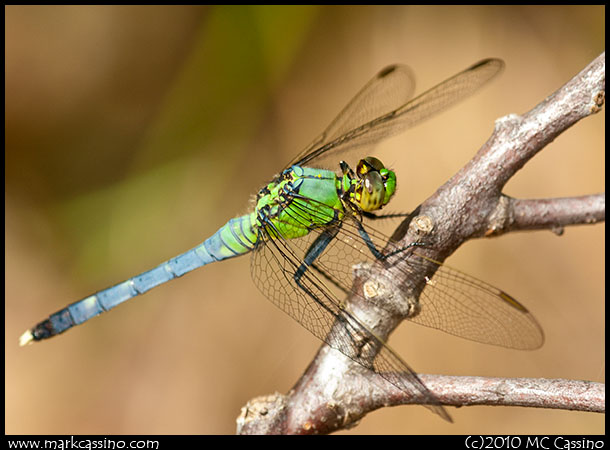

A male Widow Skimmer -
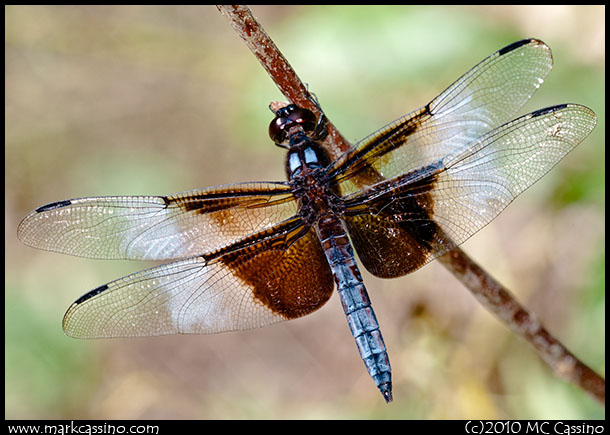
And lastly, a Hairsteak Butterfly -

Well, here we are in late October. I’ve had little time to visit the fields, but fall is well under way and things are going to brown. Here’s a little essay from this July that never made it onto this blog:
There is an interesting place in the Allegan Forest. It is off 44th street, a ways south of 115th avenue. When you drive by on the dirt road you can catch a glimpse of a small parking lot at the end of a little drive, carved out of the forest. If you look closely as you pull in you’ll see a small log wedged in the branches of a pine tree near the entrance, with a moldering orange ball the size of a softball, or a grape fruit, fixed to it.
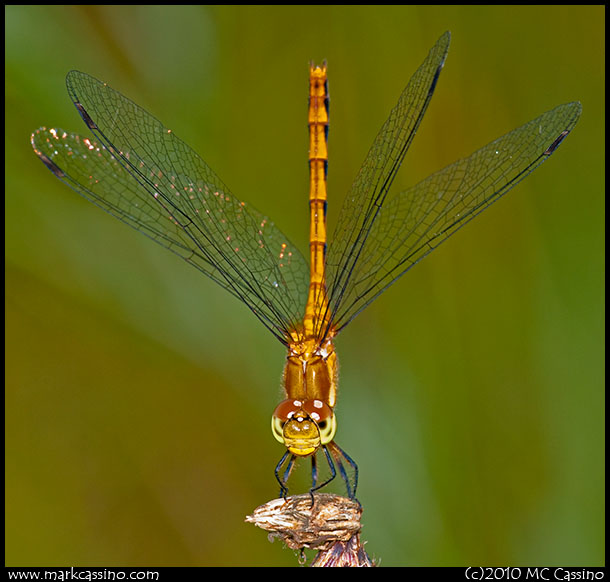
The parking lot is maybe big enough to accommodate 10 vehicles. It is dry gravel with the scrubby woods pressed close in on the north and the south. Someone dumped a bunch of garbage there, so plastic bottles, cans, scraps of tin foil and shreds of plastic bags adore the edge of the forest. If you look down and it is summer, you will see ants on the gravel. Lots of ants.
There is a small red gate, the kind typically installed by the DNR to close off two tracks and service roads. Behind the gate is a long disused two track, just two parallel bands of gravel with weeds in the center strip growing up 6 feet or more. Near the gate is an old cast iron pipe with a slot cut in the side. Similar pipes are used to this day at state parks and campgrounds - you drop your self-registration paperwork and fees into them.
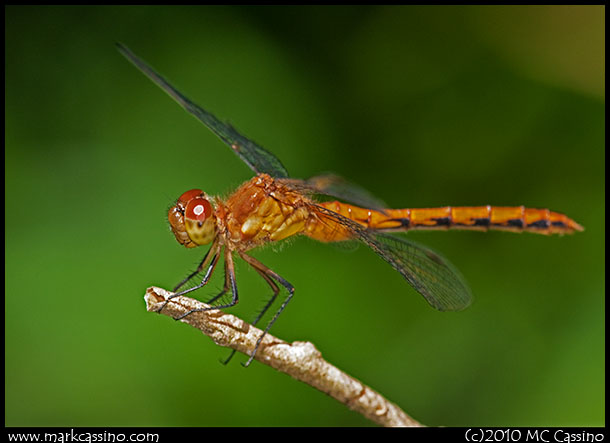
The abandoned two track runs straight as an arrow into the woods. The trees have been cleared 20 or 30 feet to either side, though here and there a midsized tree has taken hold and is growing right beside the road.
The cleared areas along the side of the road are knee high with grass, knapweed, poison ivy, patches of milkweed and other plants. Huge anthills – domes 8 or 10 feet in diameter – rise up out of the grass. No plants grow on these nests, instead they are perforated with dozens of holes and millions of ants scurry in and out of them. The road extends for over 300 years, and the ant hills rise up every few feet for that entire distance. I imagine it is a huge single colony of ants – but maybe it is a federation of separate ant states. Either way, it pays to walk gingerly and not to stand around idle. Even on the road or the parking lot, you will get the stray ant tickling its way up you leg until it realizes it is stuck, and then the pinprick of its bite.
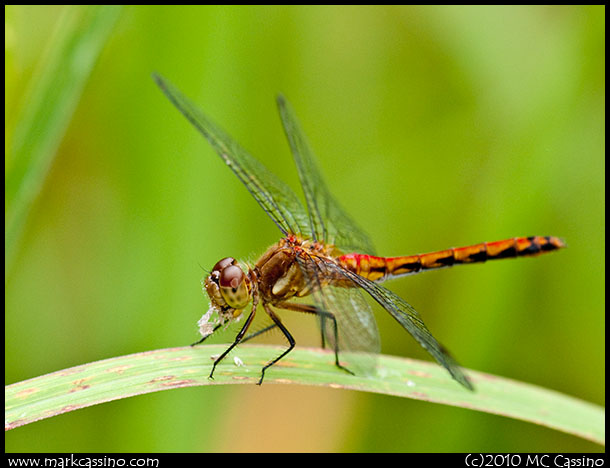
Thankfully, the ants here in Michigan are all pretty mild. Though it’s not a good idea to walk on the ant mounds and it is a very bad idea to jab a monopod into the soft sand of the ant domes. Take it from me.
Where the two track ends there is a break into a large field on one side. It is open and green and lush this time of year. Visiting it on Saturday, a white tail leapt out of the brush and bounded away gracefully. A moment later two young deer – still with their spotted coats but almost the size of a full-grown adult – bounded off in the other direction.
A couple of small concrete slabs are carved out of the vegetation – foundations form some now long gone buildings – and in a copse of scruffy trees a large sewer pipe stands on end – at least 6 feet in diameter and towering 20 feet or more into the air. I once spoke with a hunter here who referenced “the silo” – but it is a sewer pipe. How it got in this place and on its end is anyone’s guess. Someone – no doubt mystified by its presence here – chipped a hole in the side of it. Too small for a person to get through, you could peer into the inky darkness inside the pipe, if you wanted to.
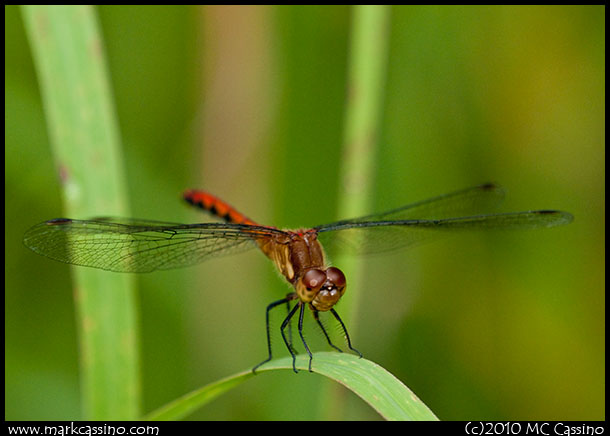
If you keep going along the path that continues from the two track you’ll go 30 or 40 feet with large trees pressing in on either side, and then come upon a huge field, a few hundred yards long and wide. It is a regular square, carved out of the forest, and this time of year is full of knapweed, prairie grass, and lots of wild strawberries – acres of wild strawberries.

And all along the way there are dragonflies – lots of dragonflies – and their images are recorded here in this post.
Autumn has come upon southwest Michigan like the mist in the morning. In some places it is thick and defines the scene, in others it is barely present and easy to ignore. If you wanted to pretend it is still summer, you could turn your back on the bright red maple and look down a narrow row of trees and see only green.
More subtle signs are more telling. The insects that fly in the fields are like tick marks on the face of a clock, always pointing towards the true time of the season. And of course, I see nothing but Autumn Meadowhawks, and the occasional Buckeye Butterfly.
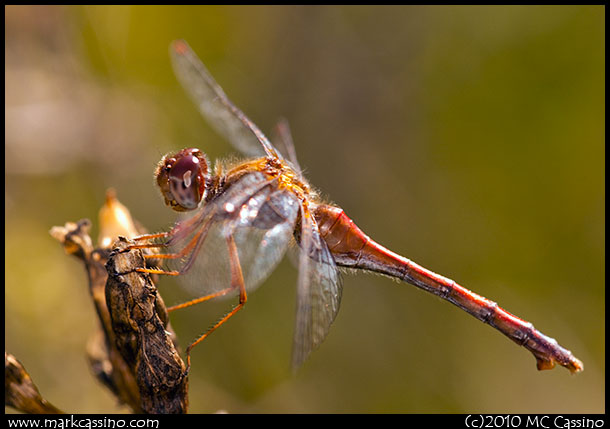
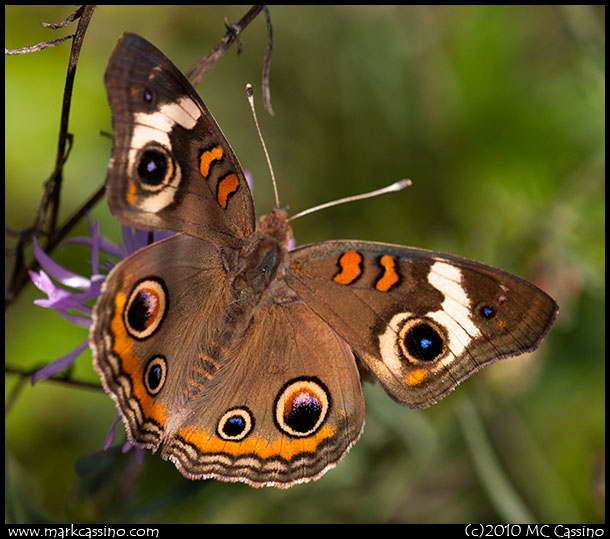
I visited the old farmstead to see what had become of this field. The logging has stopped and the huge piles of trees have been cleared out. The little parking area that had been rutted by the constant flow of semi-trucks, coming and going to get the logs, was graded and planed to be almost smooth. I stopped and wandered down to the pond. The field was recently mown so there was no tall grass for the dragons to perch upon. But many joined pairs of Autumn Meadowhawks filled the air over the water. More numerous were they than the single dragons, or so it seemed.

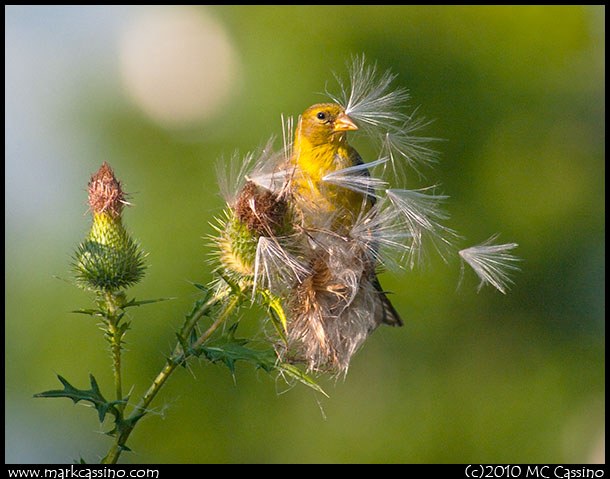
I live in the city and have a small urban yard. It’s not much for attracting wildlife, but it is sometimes surprising to see what can pass through this little space. Over the last few years I’ve been trying to cultivate wildflowers in a strip along the edge of the yard. The project has resulted in a mixture of domestic and wild plants, some native and many not.
Here we have phlox, grey coneflower, day lilies and queen of the prairie alongside peonies, tulips, and spearmint. Some tall grasses pop up here and there. Asters bloom in the spring and autumn, some white, some blue. Each year I mow a little less of the lawn and leave a few inches more to go wild. The grass grows high and in a few weeks the coneflower, asters or phlox appear and get started.
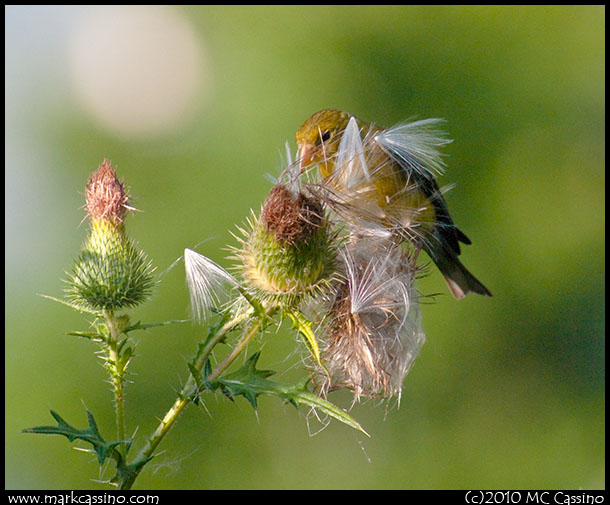
This year I stopped mowing back a bull thistle plant. The plant always managed to send out spiny leaves that were low enough to avoid the mower’s blade, but it was never able to send forth its flowering stems. After several years of being mowed back it finally got its chance to bloom, and it sent out an array of thorny stems and branches that soon bore lots of flower heads.
The flowers weren’t particularly attractive to my eye, but they brought in interesting visitors. I saw several swallowtail butterflies visiting the plant while it was in bloom, but as the first flowers faded a pair of goldfinches showed up regularly to eat the seeds and harvest the silk for their nest.
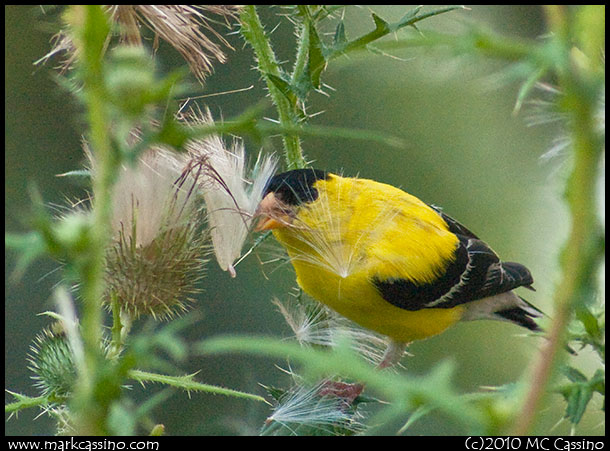
I first noticed this one day around noon. I had just gotten into my car and glanced over at the thistle to see a female goldfinch with a mouthful of downy thistle seeds. She looked like she had silky white whiskers. Over the next few weeks the pee-weep pee-weep became commonplace, as the pair would land on the thistle to feast on its seeds and gather the down.
In addition to letting the thistle grow, I stopped feeding the birds for the summer. The birdseed that had fallen from the feeders over the winter sprouted and started to grow. Early in the summer we had many stalks of wheat, that turned brown and died up by midsummer. Only after it was dry would the squirrels nip off the seed head and eat the wheat kernels. Lots of sunflowers also rose up, and these too where a favorite of the finches and other birds.

Looking at Stoke’s Guide to Bird Behavior, I see that the goldfinch nests and breeds rather later in the summer, and that nest building starts in July and runs through August. The timing of the bull thistle’s flowers and subsequent seed heads and down is perfect for the finches.
In early September I cut down the now dried up and dead thistle. The finches weren’t visiting it anymore, and the dried up stalks were pretty ugly. I put out a feeder filled with Niger thistle seed, and set the dried husk of the bull thistle onto the top of the compost pile, where the birds could still visit it if they needed any more down.
Next year, if a bull thistle shows up, I think I’ll let it grow.
